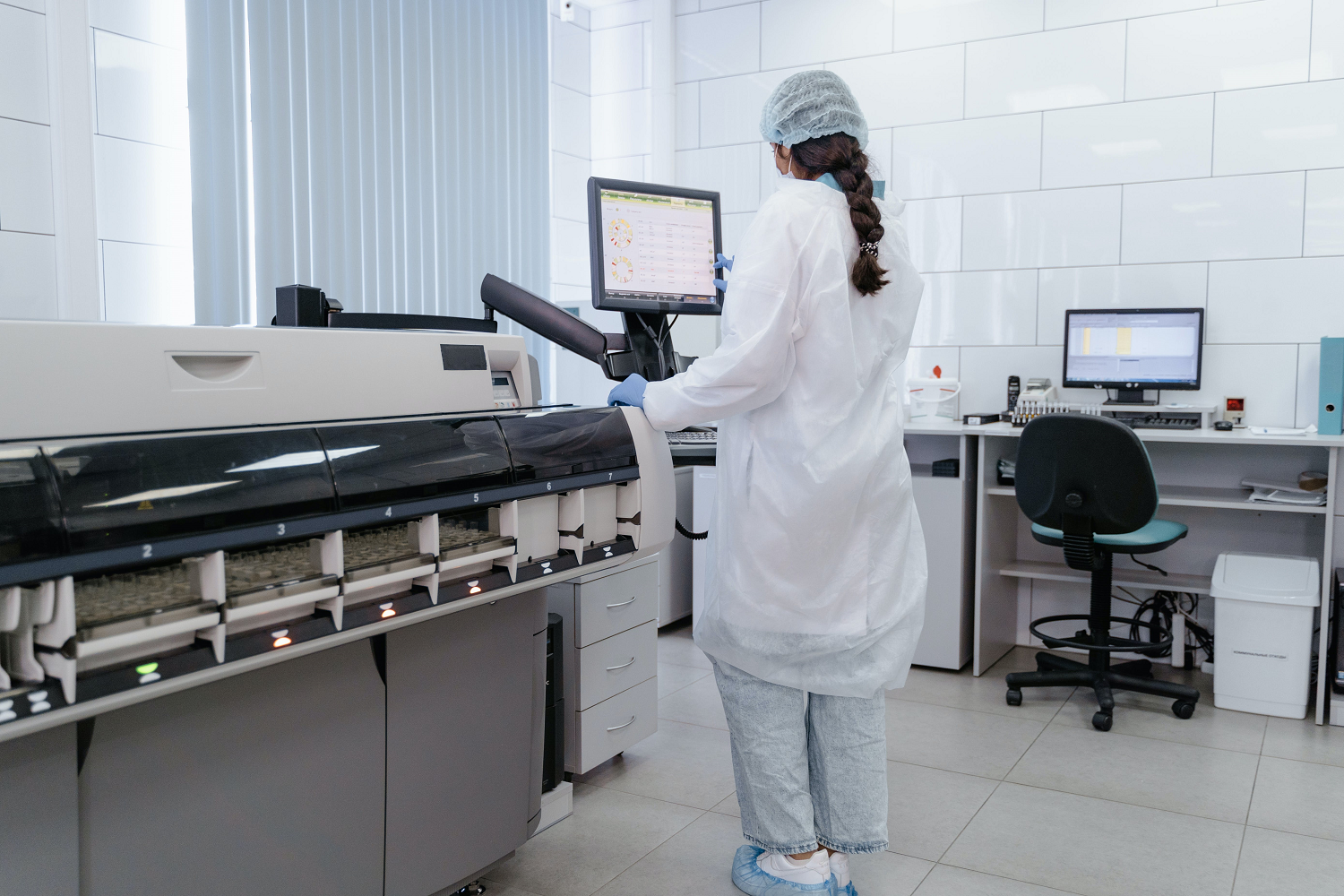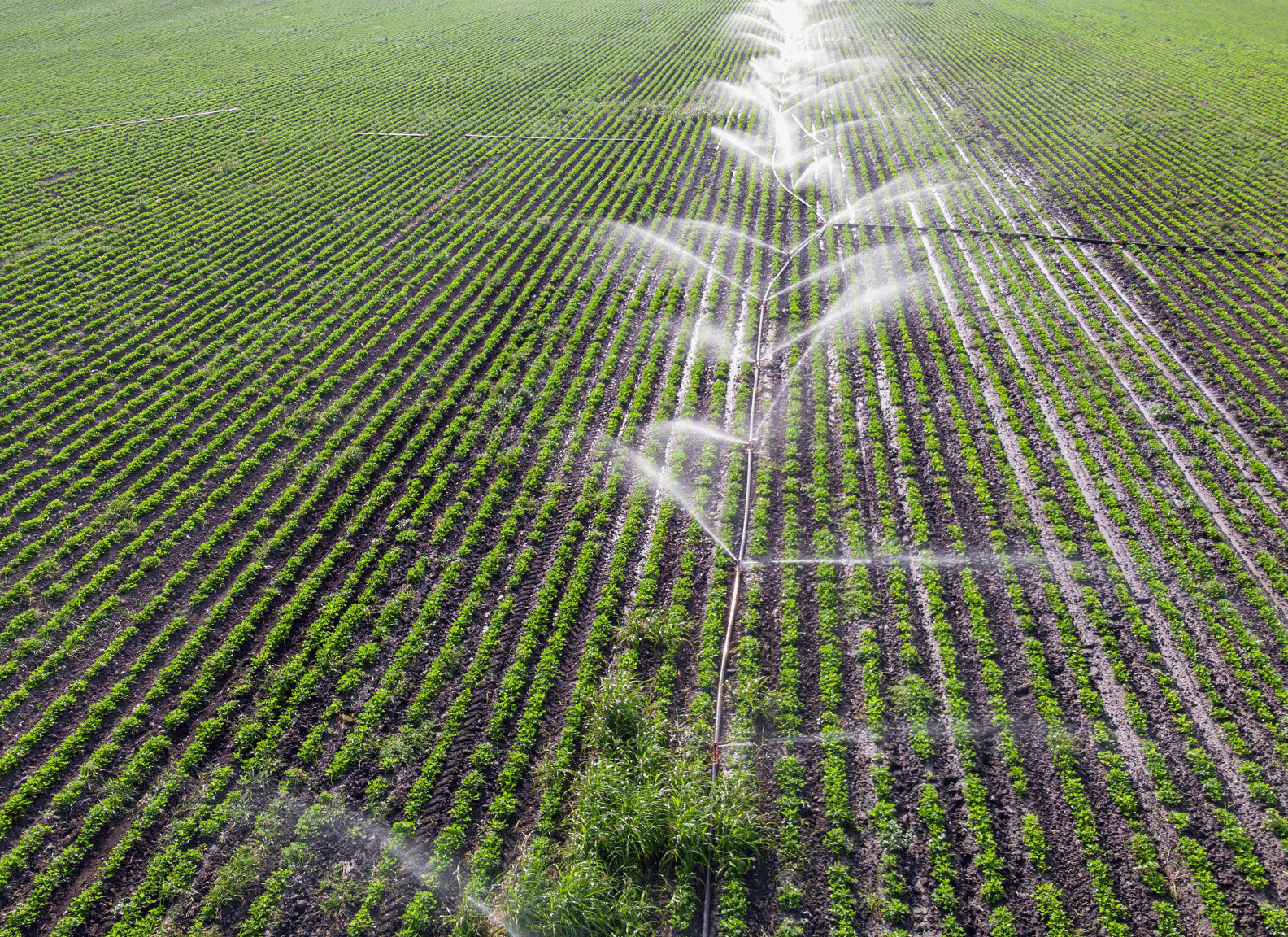Advancing technology continues to have a profound impact on various sectors globally, with biotechnology playing a pivotal role in shaping the future of agriculture.
Over the past few years, significant strides have been made, resulting in innovative solutions that address key challenges in this field.
Researchers and scientists are now equipped with the ability to enhance crop production, improve nutritional values, and reduce environmental harm, all thanks to these technological breakthroughs.
This is indeed a revolutionary time in the realm of agricultural biotechnology.
The sole aim of this article is to delve into some of those breakthroughs that are transforming this sector.
We will shed light on these ground-breaking advances, their impacts and what they potentially hold for the future of farming.
Contents
Revolutionary Biotech Advances In Agriculture
1. Genetically Modified Organisms (GMOs)
One of the most significant revolutionary biotech advances in agriculture has been in the creation of genetically modified organisms, commonly known as GMOs.
GMOs are organisms whose genetic material has been artificially manipulated in a laboratory through genetic engineering, creating combinations of plant, animal, bacteria, and virus genes that do not occur in nature or through traditional crossbreeding methods.
Broadly speaking, the main aim of creating GMOs is to enhance crop protection, by making crops resistant to pests or environmental conditions, thus leading to a higher yield.
One of the earliest and most successful examples of GMO technology was the creation of Bt crops, engineered to be resistant to certain pests.
Bt crops contain a gene from the bacterium Bacillus thuringiensis that produces a toxin harmful to pests, thus reducing the need for chemical pesticides.
This revolutionary development has drastically decreased the use of harmful chemical pesticides, leading to more sustainable farming practices.
However, it’s not all about pest resistance.
GMO technology has also been utilized to enhance the nutritional content of crops.
For instance, Golden Rice is engineered to provide higher levels of vitamin A, a nutrient usually deficient in many developing countries.
Another fascinating application of GMO technology lies in the field of pharming, where plants are engineered to produce pharmaceutical substances such as vaccines, antibodies, or even biodegradable plastics.
The use of pharming could potentially decrease the cost and increase the availability of key pharmaceutical products, particularly in developing countries where access to traditional pharmaceuticals is often limited.
Despite the benefits, the use of GMO technology in agriculture carries reasonable concerns and criticisms.
These typically revolve around the potential for unknown health effects, environmental damage, and issues related to the monopolization of the food production system.
Given these concerns, there are stringent regulations placed on the use and distribution of GMOs, with mandatory labeling in many countries intended to increase transparency and allow consumer choice.
While these concerns are valid, they should also be balanced with an understanding of the potential benefits that GMO technology could bring in the face of challenges such as increasing population growth, climate change, and the need for more sustainable farming practices.
Overcoming these challenges demands innovative solutions, and GMO technology, when used responsibly and ethically, could be a vital tool in achieving them.
Indeed, the safe and effective use of GMOs could represent a significant step towards achieving food and nutritional security, sustainable farming, and perhaps even revolutionize the pharmaceutical industry.
Thus, while it remains essential for the scientific community to continue researching and addressing the issues associated with GMOs, it is also necessary to recognize the transformative capabilities these technological advancements present.
2. Precision Agriculture Techniques
In the realm of biotechnological advancements within agriculture, one of the most critical developments is Precision Agriculture Techniques (PAT).
These techniques essentially utilize the power of big data, information technology, and geospatial technology to improve the accuracy and efficiency of agricultural operations.
Within the field of precision agriculture, variable rate technology (VRT) stands as a key component.
This technology allows farmers to input specific amounts of seeds, fertilizers, and other inputs in certain sections of their fields, minimizing waste, and improving efficiency.
Precision Agriculture Techniques provide a promising avenue to address the needs of the ever-growing global population while minimizing the environmental impact of agriculture.
This statement underlines the immediate value of Precision Agriculture Techniques.
Indeed, through the innovative use of technology, it becomes possible to produce more food using less resources, which benefits both the environment and the economy.
The potential impact of these technologies extends further into areas such as reducing the use of chemical applications and minimizing soil erosion each of which contributes significantly towards sustainable agriculture.
Examples of Precision Agriculture Techniques include Global Positioning System (GPS) soil sampling, remote sensing, yield mapping, and geographic information systems (GIS).
GPS soil sampling is a technique used to analyze the chemical composition of soil in different areas of a field to determine the exact amount of fertilizers needed.
Similarly, remote sensing technology allows farmers to monitor plant health and soil conditions from afar, using images captured by drones or satellites.
Yield mapping uses sensors on farming equipment to measure crop yields in real-time, allowing farmers to optimize their practices right away as they work.
Geographic Information Systems (GIS), on the other hand, merge all these data points into an interactive map, allowing farmers to easily understand and analyze the information.
Furthermore, automation in precision agriculture can drastically reduce the need for manual labor, easing the work pressure on farmers and allowing for increased productivity.
Collectively, Precision Agriculture Techniques hold high promise for sustainable and efficient farming practices.
As this field continues to advance and evolve, it is certain to bring significant transformations to the world of agriculture.
While there are undeniable challenges, such as data management issues, high costs, and the need for farmer training, the potential benefits offered by precision agriculture techniques make them a core component of the future of agriculture.
3. Vertical Farming Innovations
Vertical farming, a practice that involves growing crops in vertically stacked layers or inclined surfaces, is gaining popularity globally due to its innovative approach and potential benefits to agriculture.
These farming systems utilize controlled-environment agriculture technologies, allowing farmers to control light, humidity, and nutrients that crops require for their growth.
This not only optimizes growing conditions but also results in an increased crop yield and a reduced geographic footprint.
Some of the indoor vertical farming techniques include hydroponics, where crops are grown in nutrient-rich water solutions, and aeroponics, where crops are grown in air or mist environments without the use of soil.
Integrating technology with vertical farming can lead to revolutionary transformations in the agricultural domain, making it more efficient and sustainable.
Food production via vertical farming is more sustainable as it avoids typical farming drawbacks such as unpredictable weather, soil-borne diseases, and pests.
It also negates the need for harmful pesticides or herbicides, thus providing consumers with healthier organic food options.
Farmers using vertical farming methods can also grow crops year-round regardless of the weather conditions, enhancing food security in different parts of the world.
A notable example of a vertical farming innovation is the “Plant Factory” system by SPREAD Co., Ltd, in Japan.
This system uses LED lighting optimized for vegetable growth, reducing energy consumption by 40% and increasing vegetable production by 50%.
Vertical farming is also a suitable option for urban farming, where land availability is minimal.
It opens up possibilities for urban dwellers to engage in agriculture within their residential or commercial buildings, effectively bringing food production closer to consumers.
Furthermore, the integration of IoT technologies and AI in vertical farming can enhance crop monitoring, disease detection, and yield prediction, further driving the efficiency of these farming systems.
There has also been an advent of startups and initiatives focusing on vertical farming, which signals the growing acceptance and potential of this farming method.
In the Dubai government’s recent announcement of its National Food Security Strategy, it highlighted vertical farming as a potential solution.
This acceptance and adaptation of vertical farming is a testament to the potential it holds to transform the future of agriculture and food production.
Indeed, with its integration into the realm of urban life, vertical farming appears to be less an alien concept and more a futuristic solution to the challenges of conventional farming methods.
As such, vertical farming plays a crucial role in our drive towards sustainable and efficient food production, reflecting how biotechnological advancements can spearhead revolutionary changes in the agricultural industry.
4. CRISPR-Cas9 Gene Editing
One of the most innovative and transformative biotech advances in agriculture is the CRISPR-Cas9 gene editing system.
Though it may sound like something out of a science fiction novel, this technology essentially involves editing the genetic code of a particular organism in order to induce or suppress certain traits.
With CRISPR-Cas9, scientists can precisely target a specific gene sequence in an organism’s DNA and either delete or insert portions of genetic material.
Unlike conventional GMO techniques that introduce foreign DNA into a crop, CRISPR allows for precise editing of the organism’s own DNA.
This gene editing tool has been hailed as a game changer because of its accuracy, efficiency, and affordability.
It is fast becoming a vital tool in the bid to bolster food security in a world grappling with climate change and a rapidly burgeoning human population.
CRISPR technology can expedite plant breeding processes and crop improvement.
Instead of waiting for several generations of plants to pass down desired traits naturally, scientists can edit the genes directly and see the effect in the next generation.
Speeding up these processes is a key strength of CRISPR.
Undoubtedly, CRISPR’s greatest potential lies in its capacity to render crops more resilient against pests, diseases, and harsh environmental conditions.
Supporting this, there have been studies showing how CRISPR has been used to engineer crops that are resistant to viral diseases, tolerate drought conditions or possess enhanced nutritional value.
This could be of significant benefit considering the rising threats posed by climate change to agricultural productivity.
The repercussions of this technology extend beyond the framing of resilience in crops.
Bioengineers are also exploring the diverse utilities of CRISPR to improve livestock health and productivity.
For instance, it is being deployed to breed swine resistant to diseases that currently necessitate the use of antibiotics, thereby reducing the incidence of the development of antibiotic-resistant pathogens.
However, like any revolutionary technology, CRISPR also comes with significant ethical and regulatory questions.
The power to alter an organism’s genetic makeup is fraught with controversy and potential unintended consequences.
While the precise control offered by CRISPR eliminates many of the risks associated with conventional genetic modification, it does raise new concerns about the ease with which certain traits can be edited.
The implications for biodiversity and potential alterations to entire ecosystems present grounds for pause.
As such, there is the need to carefully monitor the use of CRISPR in agriculture and to keep rigorous regulatory structures for its usage.
Transparency and stringent safety protocols will be crucial in ensuring the best and most responsible use of this powerful new technique.
Amidst the concerns, the transformative potential of CRISPR-Cas9 cannot be overstated.
In the right hands, it promises to be a powerful tool in the ongoing quest to create a more equitable, secure, and sustainability-driven global agricultural system.
From advancing innovative traits in crops and livestock to reducing the occurrence of diseases and improving resilience in the face of changing climate, CRISPR technology is charting a new horizon in agricultural biotechnology.
Overall, the CRISPR-Cas9 gene editing technology indicates a shift towards more precise and efficient strategies in agricultural biotechnology.
It is a demonstration of how biotechnological advances are paving way for a revolution in sustainable agriculture.
5. Agriculturally-relevant Synthetic Biology
Synthetic biology incorporates the principles of engineering with biological research, resulting in the construction of new biological components, such as enzymes, genetic circuits, and cells.
Quickly emerging as a trailblazing force in agricultural biotechnology, synthetic biology provides sustainable solutions to some of the most pressing challenges the agriculture sector faces.
One crucial application is the engineering of crops to enhance resistance to disease and tolerance to climate change.
This not only offers hope for food security but is also a vital step towards achieving sustainability in agriculture.
Developments in synthetic biology methods, such as gene drives and transcription factor-based circuits, provide advanced means of introducing specific traits to plants without interfering with their existing genetic makeup.
The possibilities within the realm of synthetic biology extend beyond crop engineering; they also involve creating ‘programmed’ biological systems designed to detect and respond to environmental stimuli.
This concept, known as biological sensors, brings a novel approach towards maintaining soil health, detecting plant diseases early, and mitigating crop losses.
Microbes engineered through synthetic biology techniques can engage in temperature sensing, phytoremediation, and the production of biofertilizers.
Another revolutionary application lies in the realm of biotechnology using synthetic biology to engineer mycorrhizal fungi that enhance a plant’s nutrient uptake capability, providing a more organic alternative to chemical fertilizers.
Furthermore, ‘gene circuits’ or ‘genetic switches’ can be designed to cause a specific response under certain conditions, providing an innovative method to protect crops against adverse environmental factors.
For example, a crop could be genetically engineered to build drought resistance by ‘switching on’ certain genes when water levels decrease.
Moreover, the breadth of applications also spans livestock and aquaculture sectors. Manipulation of microorganisms in the gut microbiota of these organisms can lead to enhanced immunity and production rates.
Additionally, synthetic biology presents an opportunity to massively ramp up production of biofuels, utilizing a variety of feedstock from algae to agricultural waste, thereby adding another layer of sustainability to the agritech sector.
Even though it’s a nascent field, synthetic biology could fundamentally change how we approach agriculture by introducing a level of precision, sustainability, and scalability previously unattainable.
However, while the potential of synthetic biology is groundbreaking, it’s crucial to consider and address the ethical, regulatory and biosafety questions it raises, ensuring a responsible and beneficial deployment of this technology in agriculture.
The potential of synthetic biology in agriculture is tremendous, paving the way for the development of futuristic bio-based and data-driven agricultural practices.
The use of ‘biological sensors’ for maintaining soil health and early disease detection signifies a unique blend of biology and technology to revolutionize farming practices.
It strongly supports the earlier statement about creating ‘programmed’ biological systems.
These applications are potentially powerful tools to support sustainable farming and maintain global food security.
This also supports the point about enhancing crop disease resistance and climate change tolerance.
It thus also signifies the boundless possibilities incubating within this innovative field.
The Bottom Line
Genetically Modified Organisms (GMOs), precision agriculture techniques, vertical farming innovations, CRISPR-Cas9 gene editing, and agriculturally-relevant synthetic biology stand at the forefront of the agricultural revolution, driving transformative change in global food production.
GMOs have the capacity to increase crop resistance whilst precision agriculture techniques enhance efficiency and yield.
Vertical farming solves for space limitations, essentially democratizing farming across varied landscapes.
CRISPR-Cas9 gene editing, arguably the most power-packed of these innovations, comes with the potential to rewrite the genetic makeup of crops and livestock.
Finally, synthetic biology can create plant-based alternatives and replace traditional crops with their genetically identical counterparts.
With these advancements, feeding the growing global population in a sustainable way is a promising prospect.




